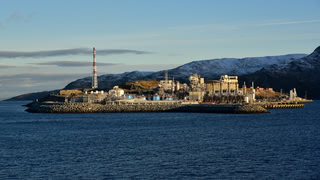E-Fuels and E-Chemicals may need multiple times the World's current Electricity Production
Technologies turning water and carbon dioxide into energy-rich chemicals could replace fossil fuels where electrification is not feasible. However, Carbon Capture and Utilization (CCU) would require enormous amounts of clean electricity.

Moving to clean energy often means moving from combustion processes to electricity. This not only avoids greenhouse gas emissions and other pollutants but also has the added benefit of increased efficiency.
Heat pumps make more heat energy available than the amount of electric power they consume. They can do this trick that only appears to violate the laws of physics by taking heat energy from the environment.
Electromobility, whether in battery-powered cars or electric trains powered by overhead wires, needs much less energy compared to combustion engines. The latter lose more than two-thirds of their energy input through waste heat.
Even in sectors considered challenging to decarbonize, like high-temperature heat in industrial processes, electrification can bring efficiency benefits. Combustion processes always lose part of their energy through hot emissions.
Thermodynamics is kind to us when we want to move towards clean electricity. We need less energy overall because electricity can provide more useful energy. This is also why primary energy is a misleading metric for the transition to renewables – as many others have pointed out before. We use a lot of primary energy today because fossil fuels are so inefficient.
This is good news: moving to clean energy is easier than primary energy numbers would imply. We do not have to replace all primary energy. We can harvest the efficiency benefits that electrification brings along the way. While the intermittent nature of clean electricity means some efficiency losses due to storage, those are minor compared to the losses from fossil fuel combustion.
We cannot Electrify Absolutely Everything
Unfortunately, there are cases of fossil fuel use that we cannot simply replace with electric processes. The most significant are petrochemicals, long-distance aviation, and shipping.
Petrochemicals used to make plastics and other products do not just use fossil fuels as an energy source. They are made from fossil fuels, in most cases oil. The carbon content in plastics is carbon from fossil fuels. And this matters: The carbon does not stay there forever. It will often be burned in waste incinerators, where it turns into CO₂. Or it may slowly degrade in nature or poorly managed landfills into even more damaging greenhouse gases.
Improvements in battery technology may enable electrifying planes on short distances and with small numbers of passengers. But unless unexpected breakthroughs by orders of magnitude happen in battery technology, long-distance aviation will never be powered by batteries. They are too heavy and cannot provide the energy density needed.
Small and medium-sized passenger ships on distances below 100 kilometers can - and should - already use electric energy from batteries today. Container ships on rivers can be recharged regularly, and direct use of wind via sails can lower fuel consumption. But large-scale container ships will still need energy-dense fuels to cross the oceans.
When direct use of electricity is infeasible, we can consider hydrogen. Green electricity can be used to make hydrogen from water in a process called electrolysis, but that already involves unavoidable losses. And while hydrogen is promising to decarbonize industries like steel, it still hits its limits in shipping and aviation. Hydrogen has a high energy density per weight but a very low energy density per volume. In other words, it takes up a lot of space.
Airbus is working on hydrogen-powered planes, though some have doubts about the sincerity of their plans. But even Airbus expects their largest hydrogen-powered planes only to achieve distances of up to 3,700 kilometers. If that optimistic goal materializes, it would be enough to power short- and medium-distance flights, but long-distance aviation needs a different solution. For example, the distance from London to New York, one of the busiest flight routes between Europe and America, is above 5,000 kilometers.
For shipping, the story is similar. While hydrogen may provide a solution for some ranges and ship sizes above what batteries can power, it cannot provide a solution for long-distance container shipping.
Chemicals, Shipping, and Aviation
Shipping and aviation need energy-dense fuels. And carbon-based products - like plastics - need carbon. There is no way around that. Furthermore, carbon-based fuels may be used in long-duration electricity storage.
Technologies known as carbon capture and utilization or CCU offer the promise that we could replace those carbon-based fuels and chemicals with ones made from water and carbon dioxide. All of these technologies start by making hydrogen. Given they are made with electric energy, we call the products of these technologies e-fuels and e-chemicals.
Plastics and other carbon-based chemicals could be made from e-naphtha created by a Fischer-Tropsch process or from e-methanol. Planes could fly with e-kerosene. Container ships could be powered by e-methanol. Major shipping companies, including the container shipping giant Maersk, have already ordered ships with methanol-ready engines. (The shipping industry also discusses using ammonia as a fuel, which avoids the need for carbon dioxide. But ammonia is highly toxic, so there are substantial safety concerns.)
As discussed in the first part of this series, CCU technologies are only compatible with a climate-neutral future if their carbon dioxide source is not of fossil or otherwise geological origin. It has to come from biogenic sources or direct air capture. But that is not the only challenge.
With electrification, we have the great advantage of getting major efficiency wins for free. With CCU, the opposite is true. While they offer a way to obliterate fossil fuels, they are very inefficient.
If we power a combustion engine or a thermal power plant with e-fuels, we still have the inherent inefficiencies of these technologies. This is true for a car powered with e-fuels – something a vocal group still thinks is a good idea – but it is also true for a plane. But we are adding another inefficiency: The production process of these fuels and chemicals.
Carbon dioxide and water are, as chemists say, very inert. They do not react easily, as they have a low internal energy (so-called Gibbs Energy). Converting them to higher-energy molecules requires a lot of energy. Most of that energy is needed to make hydrogen for these processes.
CCU technologies are essentially reversing the process of combustion. They are un-burning CO₂. All the energy stored in e-fuels and e-chemicals must be provided from external sources. But these processes also have losses. Thermodynamics dictates that every conversion from one form of energy to another causes a loss of useful energy – also called exergy.
That does not mean the efficiency cannot be improved, and there are some promising developments in that direction. Solid oxide electrolyzers could increase the efficiency of making green hydrogen. A Berlin-based startup called C1 uses quantum simulations to develop more efficient catalysts for methanol synthesis. But in the end, thermodynamics puts a hard limit on the efficiency these processes can gain.
Today's World Electricity Production just for Chemicals – or for Aviation
Today, the world produces around 28 Petawatt hours of electric energy annually. Despite renewables' record growth, most electricity still comes from coal and gas.
A study published in the scientific journal PNAS in 2019 (Kätelhön et al.) estimated what it would take to run the entire fossil-based chemical industry on e-methanol. The result: somewhere between 17 and 32 Petawatt hours, depending on different assumptions about the availability of experimental technologies. In other words, about as much as the world produces today.
A report from the EU-funded research project Clean Sky contains estimates for the electricity needs of an aviation sector powered by hydrogen and e-fuels. If hydrogen-powered aviation works and is rolled out quickly, the sector would require 21 Petawatt hours by 2050. With e-fuels only, which do not require changes to existing planes, aviation needs an estimated 32 Petawatt hours. Again, comparable to the current total electricity production.
A team from LUT University in Finland estimates around 58 Petawatt hours of electricity for all e-fuels and e-chemicals by 2050 in a study published in 2022 (Galimova et al.). Of course, all of these studies come with certain assumptions baked in. But they end up in the same ballpark.
One idea often put forward to tackle the energy needs of hydrogen and hydrogen-based CCU technologies is to use them to balance intermittent renewables. Solar and wind energy produce energy depending on sunshine and wind. Therefore, it is sometimes unavoidable to curtail the electricity generation from renewables. The idea of using this otherwise lost energy sounds attractive.
However, using that "wasted" energy to power hydrogen production and CCU technologies comes with economic challenges. Apart from the fact that these curtailed sources do not provide limitless energy, and certainly not twice the world's electricity production, utilizing them for hydrogen production means running electrolyzers only at certain times. But electrolyzers are expensive, so switching them off is not very attractive financially. It may be feasible to run an electrolyzer in load-balancing mode if it runs most of the time. Still, nobody will operate an electrolyzer only during rare peaks of renewable electricity production.
While running these technologies to balance renewables is something to try and investigate, it is not a magic silver bullet for the vast energy needs.
Should we limit certain Sectors?
Considering the need to electrify other sectors and possibly also the energy needs of negative emission technologies, the world's electricity sector could easily be multiple times the size of what it is today.
The massive growth of renewables in recent years is certainly welcome, but these numbers show the scale of what will be needed. Producing multiple times as much electricity as today while also transitioning the whole electricity sector to clean energy sources may not be impossible, but it surely is a challenge.
It also begs the question of whether we should reduce or at least limit the growth of particularly challenging sectors. A study published in the scientific journal Nature Communications in 2023 (Sacchi et al.) analyzed the climate mitigation options for the European aviation sector. The authors also considered other climate effects of aviation, like contrails and impacts on cloud formation.
In their paper, the researchers write: "Reducing the demand for air traffic should be a priority as it significantly decreases the resources needed, regardless of the climate scenario or technology option."
Similar things could be said about plastics. Limiting the amount of plastic used is desirable for other reasons as well. It could reduce littering and plastic pollution.
Hybrids of CCU and Bioenergy
Besides carbon capture and utilization, biomass could be another source of renewable fuels and chemicals. However, when considering land-use changes and other impacts of energy crops, bioenergy's climate footprint is often not very favorable.
Bioenergy comes with its own inefficiency problem. Plants convert solar energy to chemical energy via photosynthesis. But they do so in a very inefficient way - which means bioenergy needs a lot of space. Solar energy gets orders of magnitude more energy from the same amount of land.
Therefore, it is reasonable to primarily use biomass waste from other sectors like the paper industry, wood processing, or agriculture – which means the amount of biomass available will be limited. That limited amount should be used where it is most valuable.
Heating with wood or operating cars with biofuels uses biomass sources that should likely go into sectors where more efficient alternatives are much harder to come by – like chemicals or aviation. Even more so because many bioenergy uses are a significant cause of air pollution.
An interesting possibility is a hybrid of CCU technology and bioenergy. Bringing in additional hydrogen can increase the amount of usable carbon from bioenergy. An example is biogas made from anaerobic digestion, a mix of biomethane and carbon dioxide. The purification process for biomethane, sometimes called renewable natural gas, creates a pure stream of CO₂ as a by-product. Today, that CO₂ is often vented into the atmosphere, which is unfortunate. It should be used in CCU processes or stored permanently, which would create negative emissions.
Apart from biomass, another source of carbon-rich chemicals is plastic waste. Increased recycling rates, including chemical or advanced recycling, could lower the need for energy-demanding CCU. Chemical recycling is not without controversy either. The sector has a history of failures and problematic projects, but that is a topic for another time.
Which CCU path is more efficient?
Furthermore, considering the enormous amounts of energy needed for CCU technologies, it is reasonable to ask which type of CCU technology is more favorable in terms of efficiency. Three major technology paths exist for carbon-based fuels and chemicals made from CO₂ and hydrogen: E-methane, e-methanol, and the Fischer-Tropsch process. In terms of efficiency, e-methanol is often the most favorable. But there is a trade-off between the most efficient option and stranded assets – fossil fuel infrastructure that has no use in a climate-neutral future.
E-methane comes with the promise that it is a direct drop-in replacement for fossil gas. It would allow the use of existing infrastructure like gas grids. (A promise especially appealing to those who own gas grids.)
A similar issue that was covered before in this newsletter is how to make plastics in a climate-neutral future. The methanol-to-olefines technology, primarily used in China today, could enable a more efficient CCU route than traditional steam crackers. More efficient, but not necessarily good news for companies owning steam crackers.
Abundant and Cheap Renewables are the Key
Even the most efficient CCU routes will require enormous amounts of energy. Without cheap and abundant clean electricity, e-fuels and e-chemicals make little sense.
While CCU is inherently inefficient and will require amounts of renewable electricity that one may find challenging to imagine, that does not negate the efficiency wins of the energy transition.
Christian Breyer, professor at LUT University in Finland and one of the authors of the research paper mentioned above estimating the energy needs of CCU, told me: The sectors that can be electrified – and will gain efficiency wins – are much larger than the ones where we will need CCU technology. He estimates that overall, the energy system will still become twice as efficient.
Author: Hanno Böck
Brief
-
How committed is steel giant ArcelorMittal to decarbonization with hydrogen? Despite plenty of subsidies, Hydrogen Insight reports that ArcelorMittal may find green hydrogen too expensive for its European steel mills. ArcelorMittal's hydrogen plans in France and some questions around them were covered here before.
-
Should we store excess electricity as heat? The think tank Future Cleantech Architects published a factsheet on thermal energy storage.



